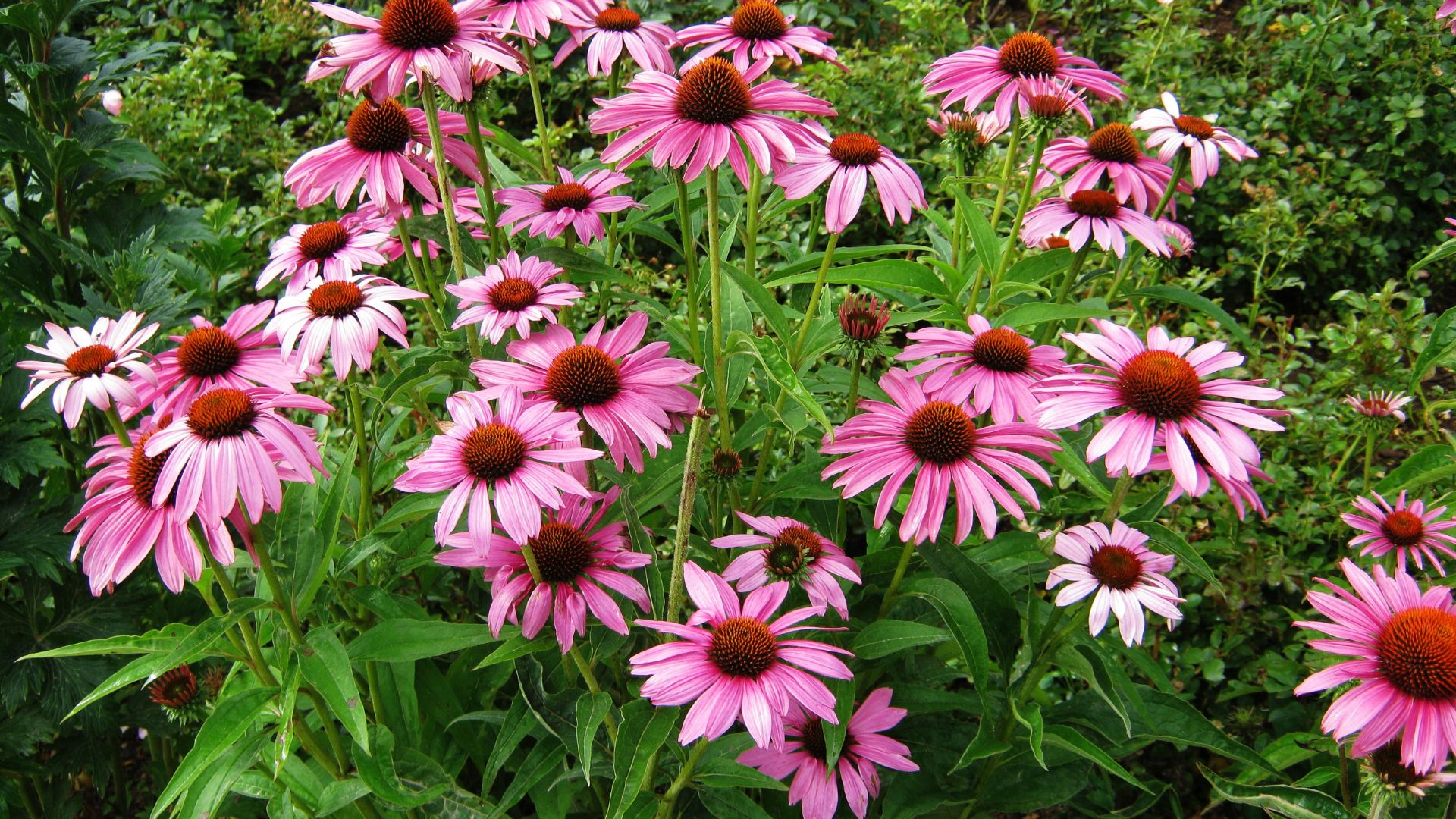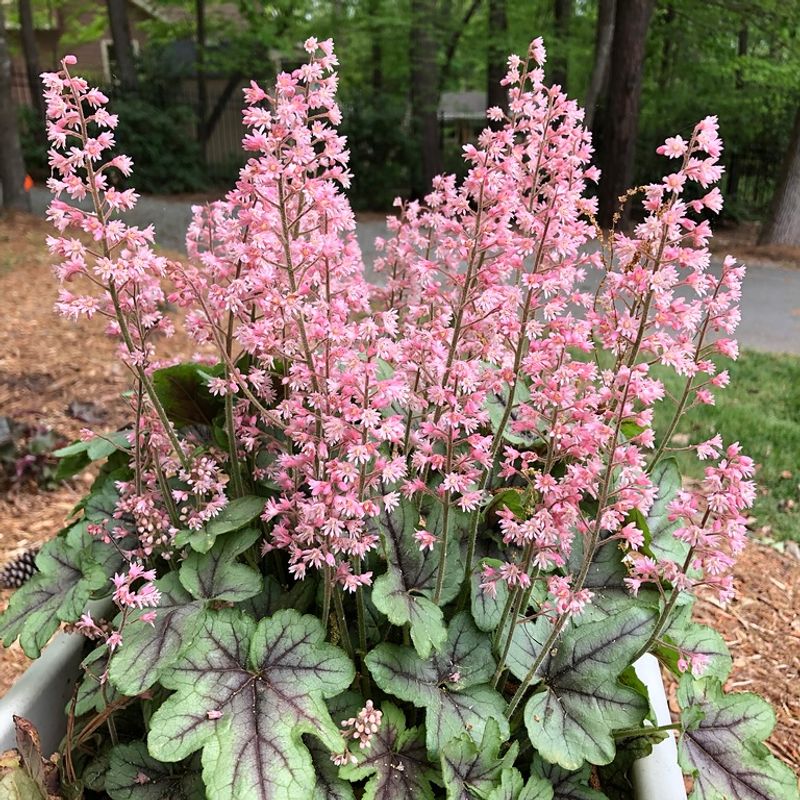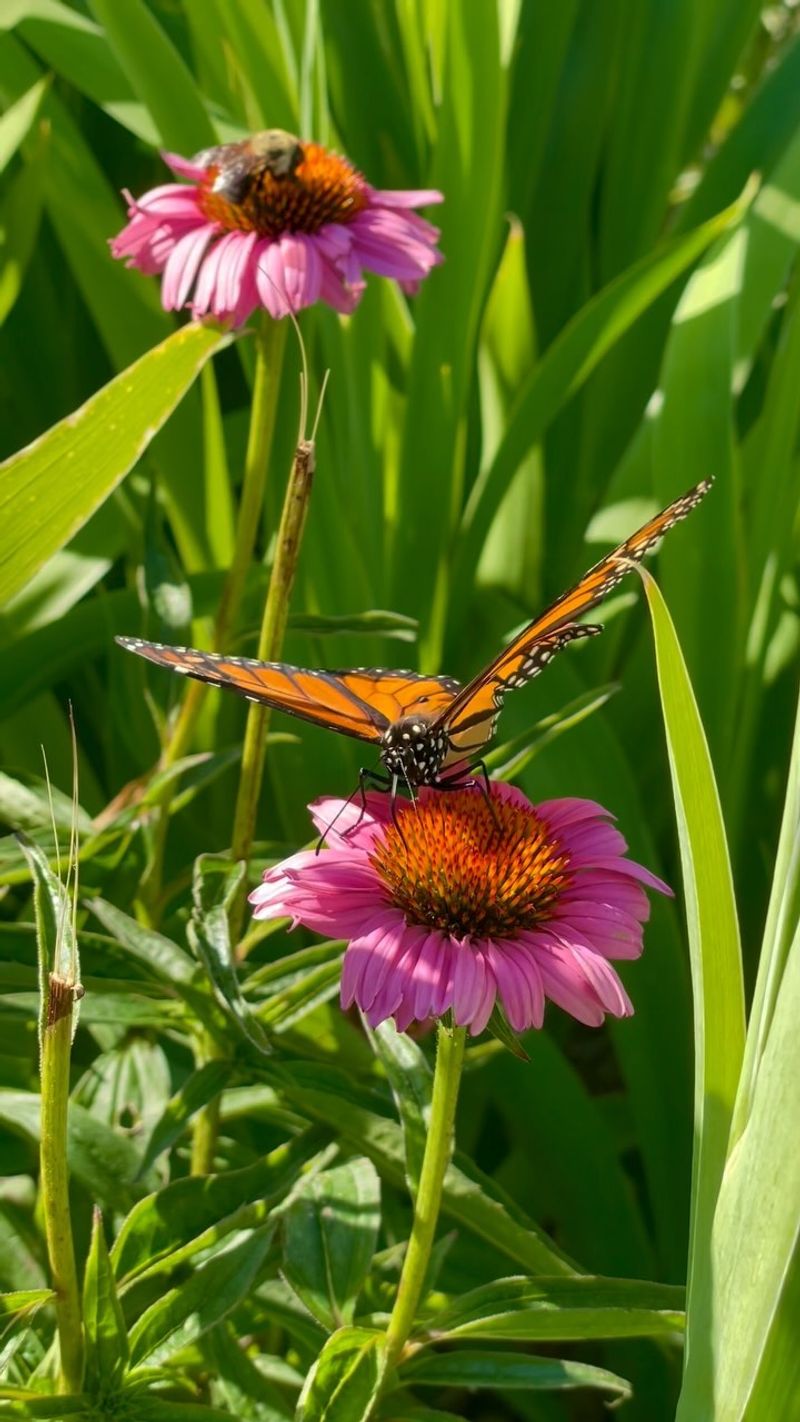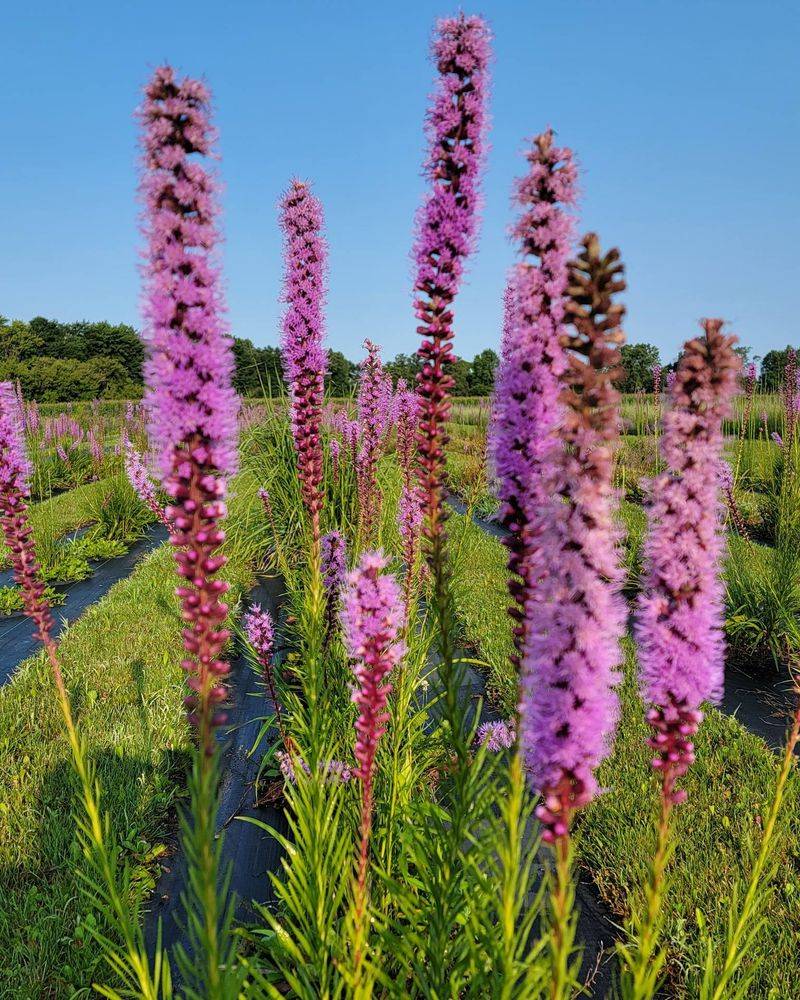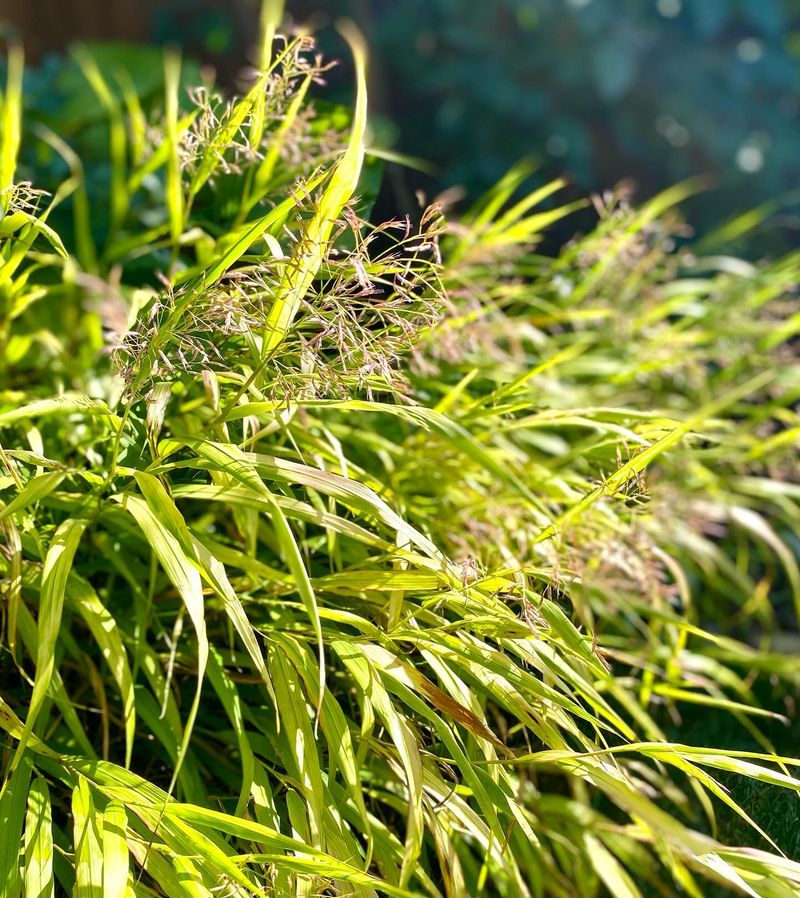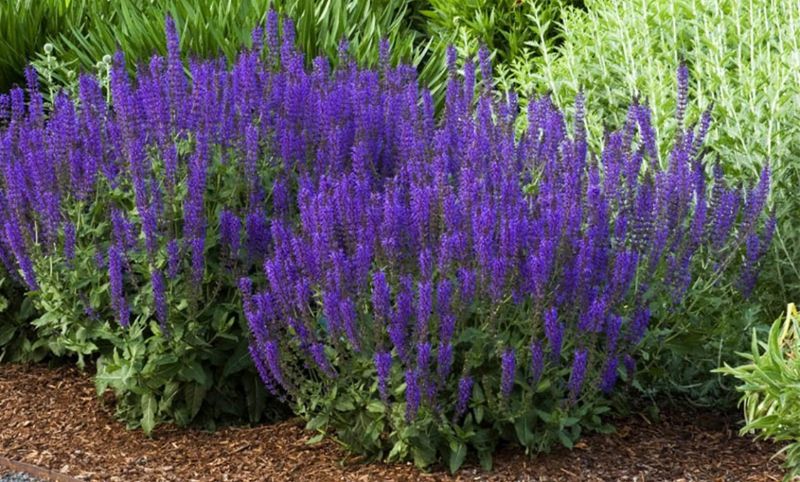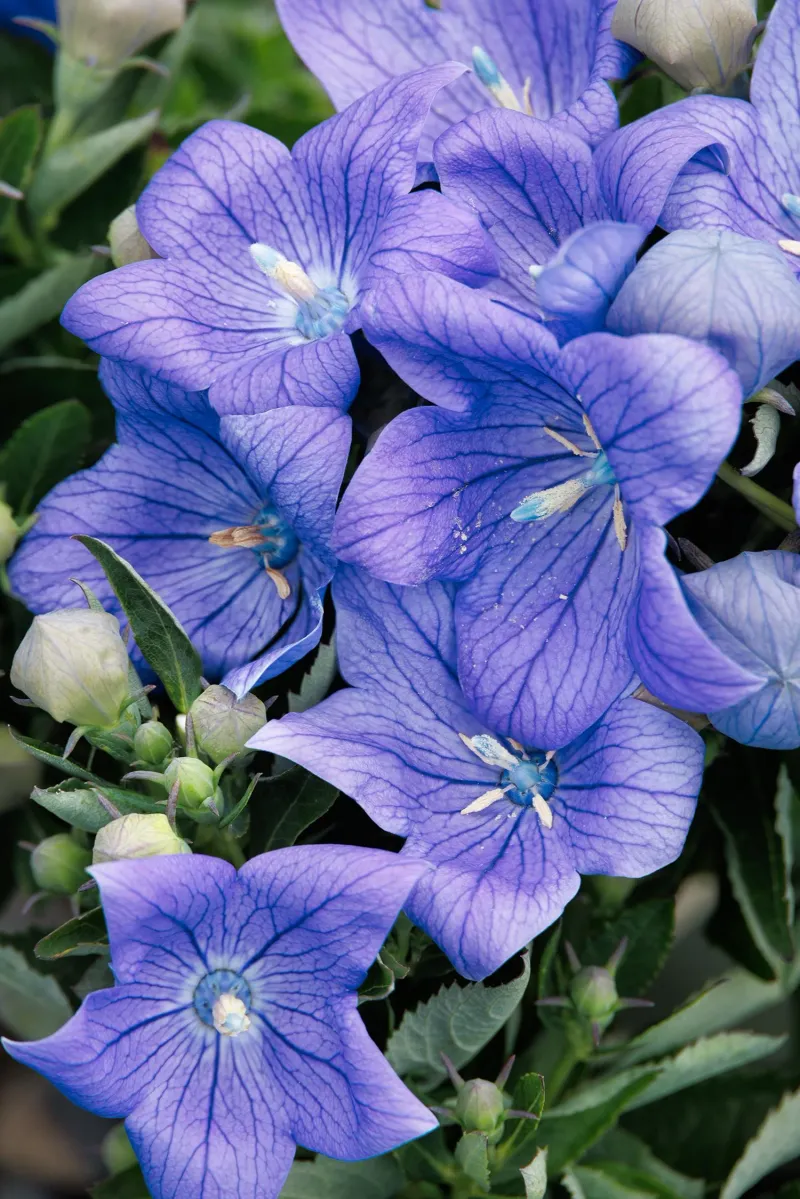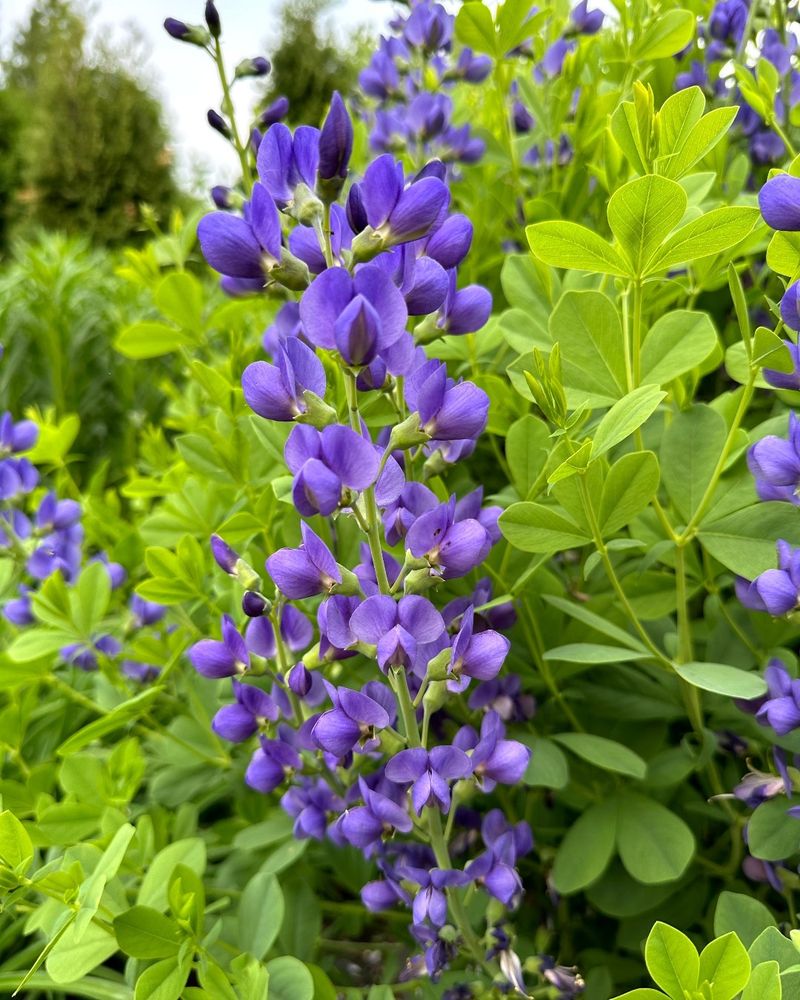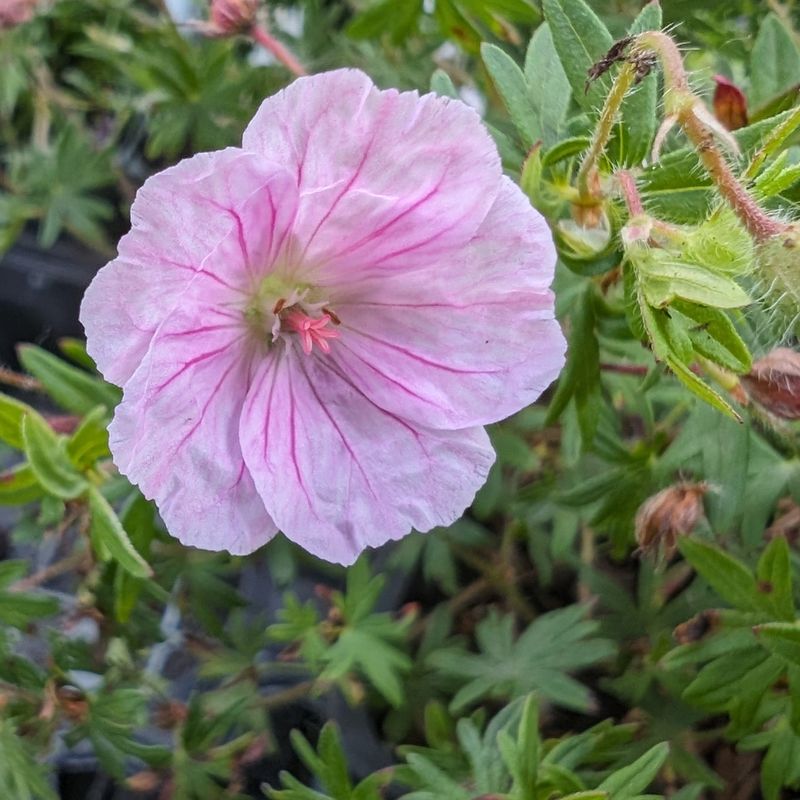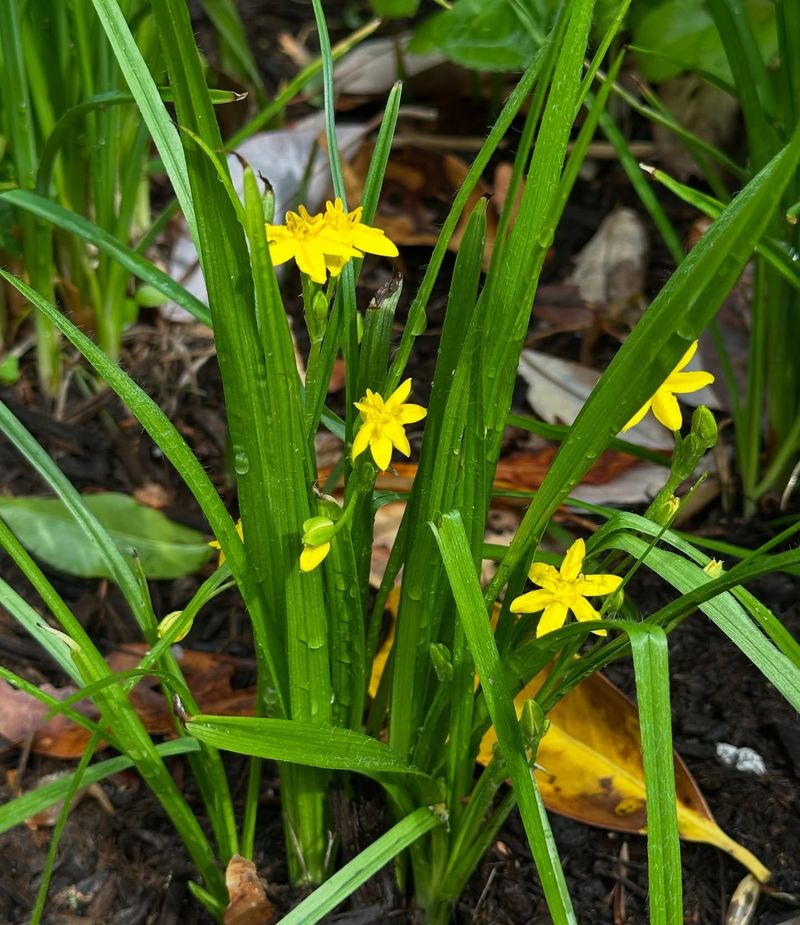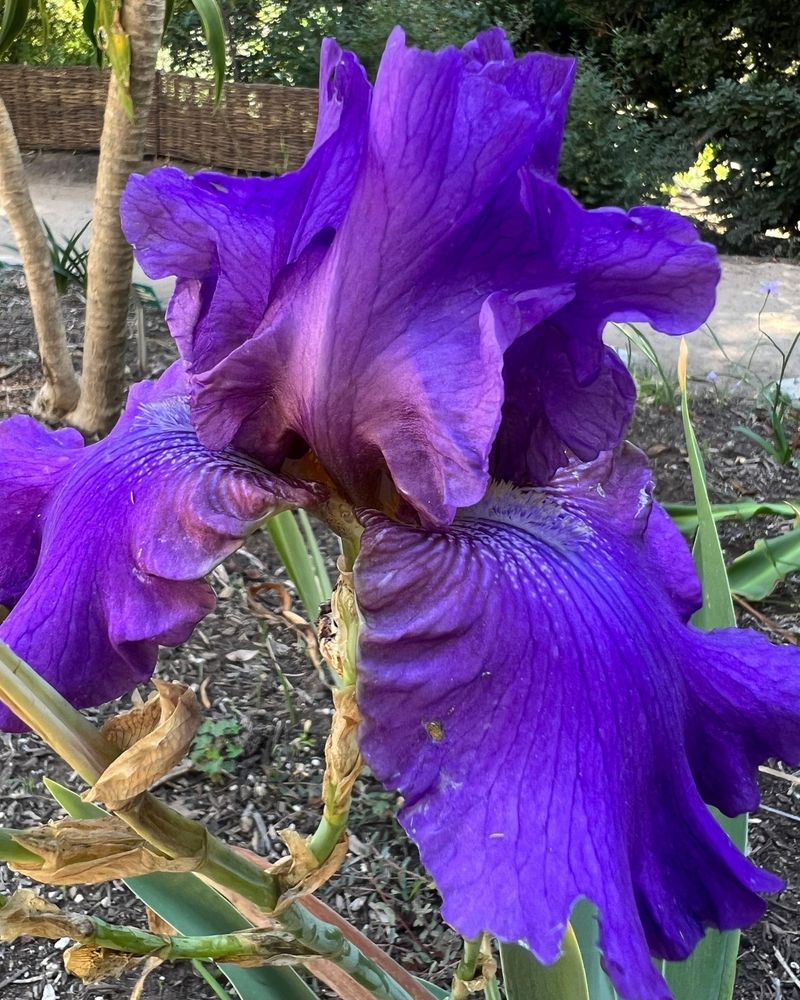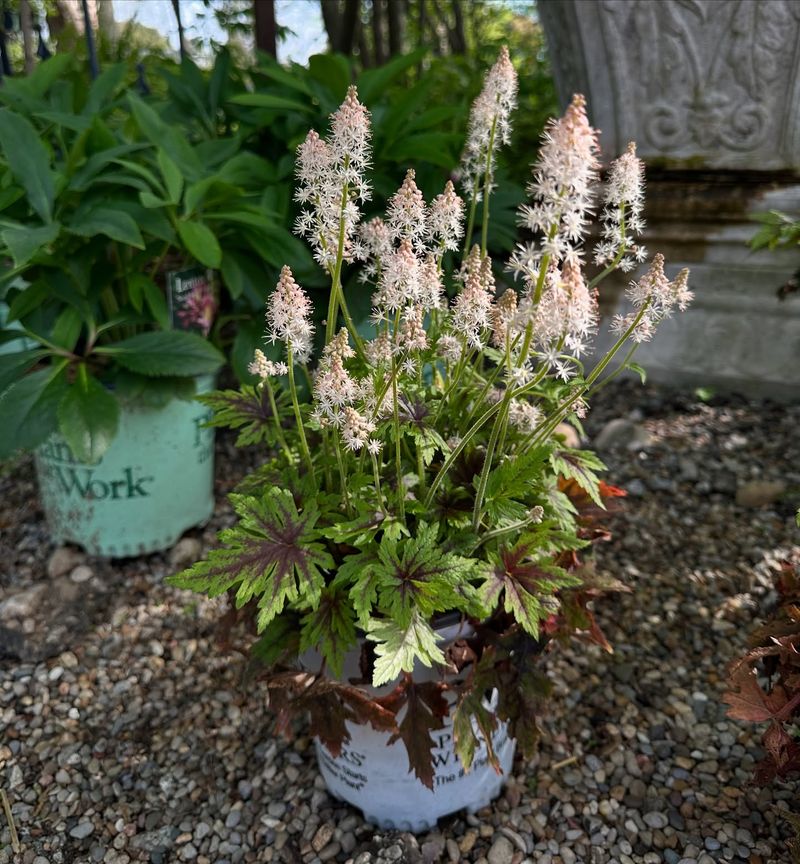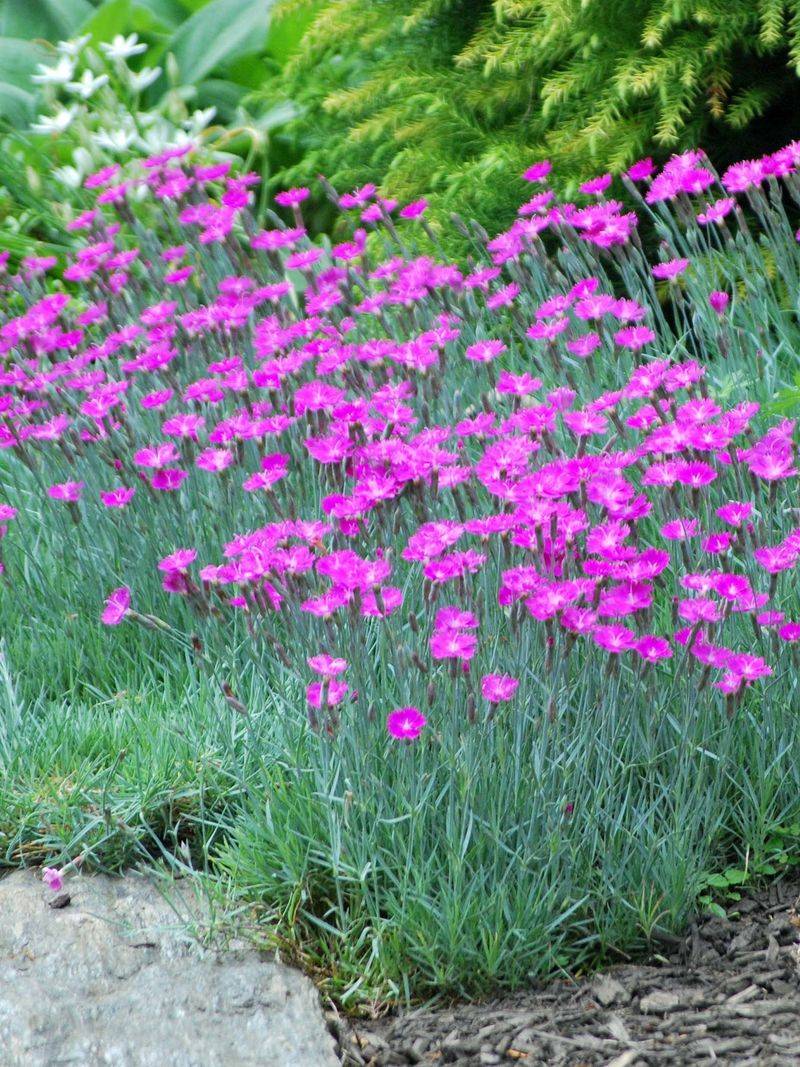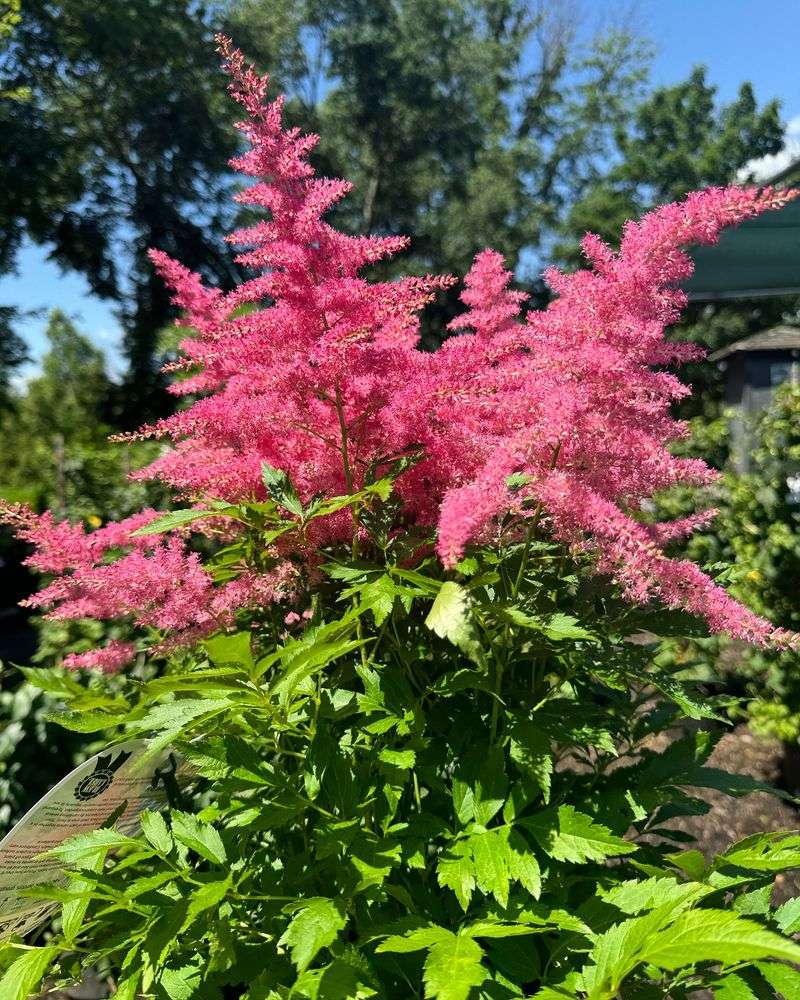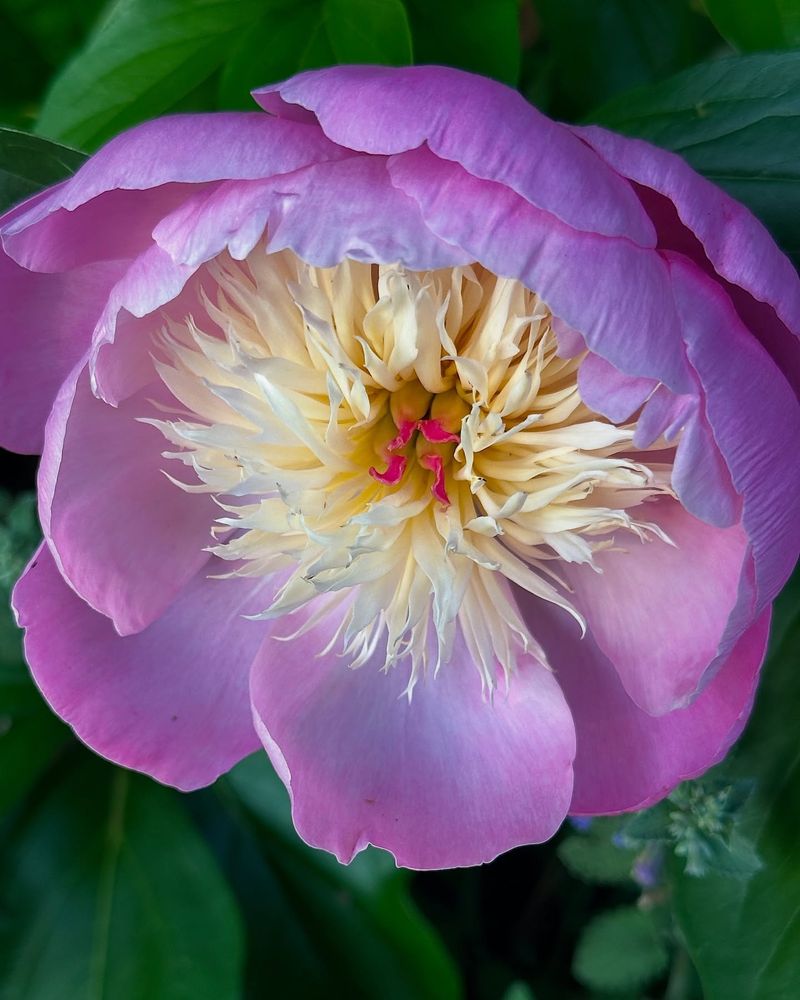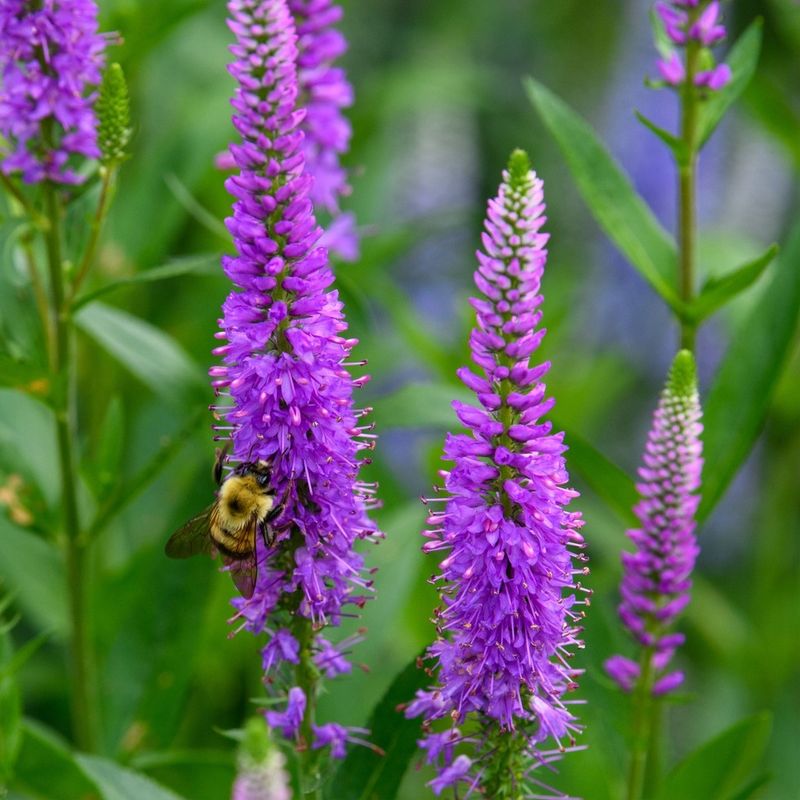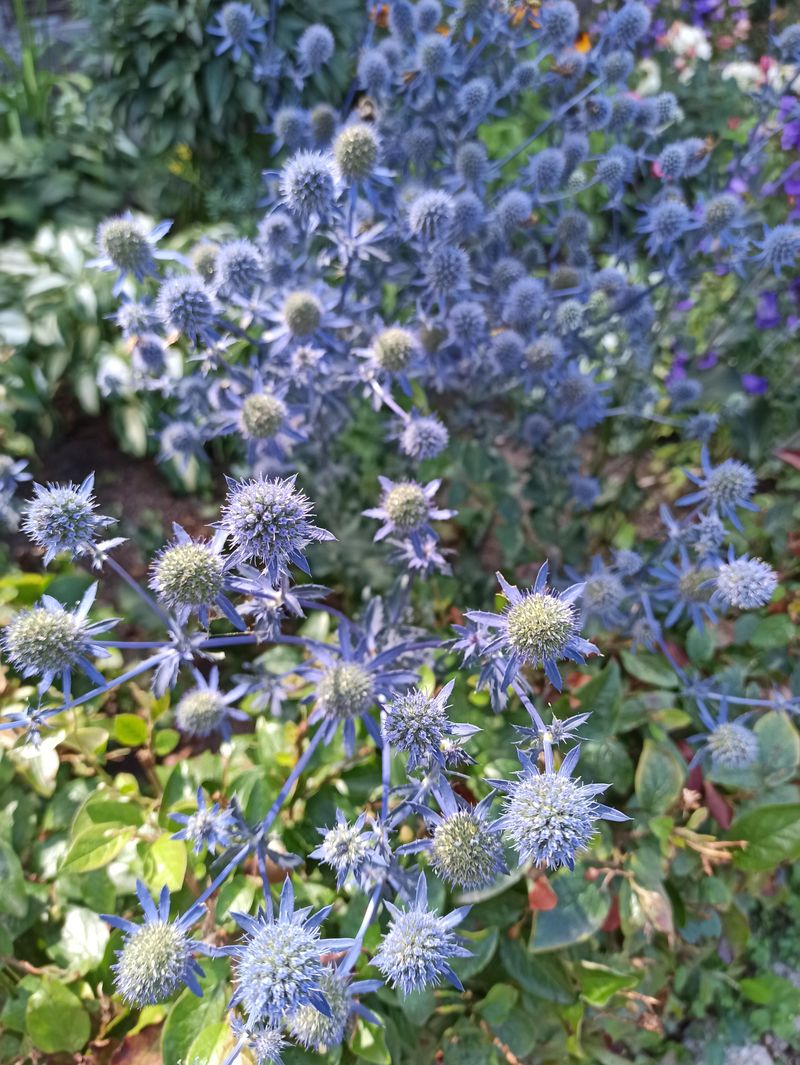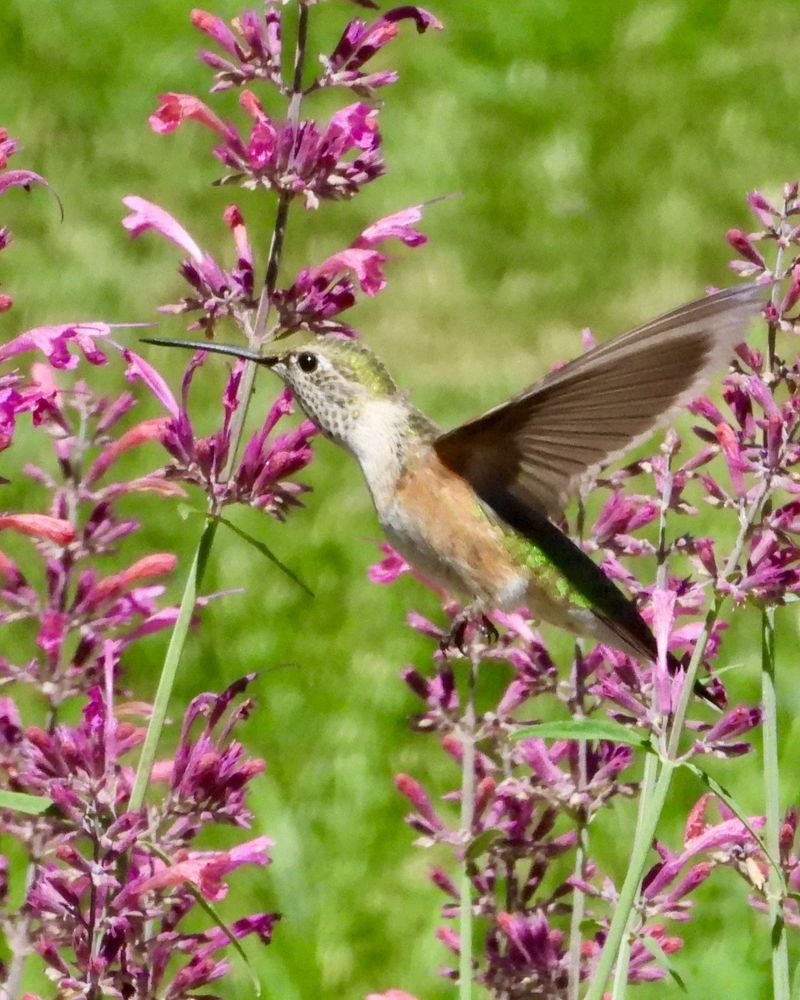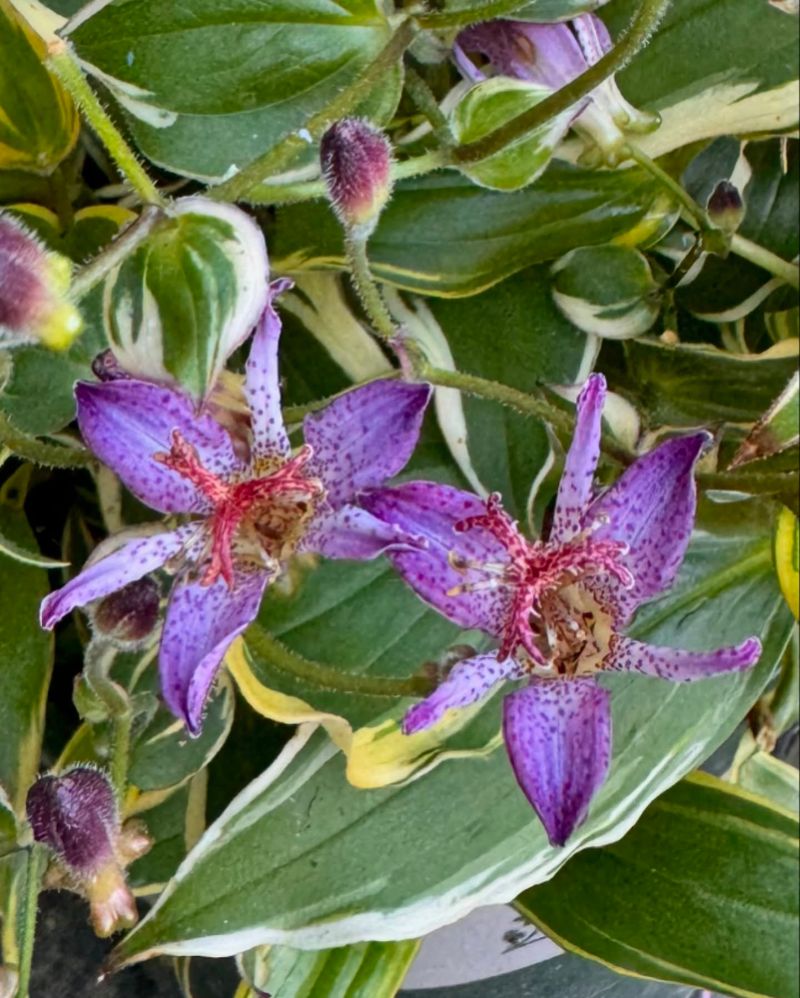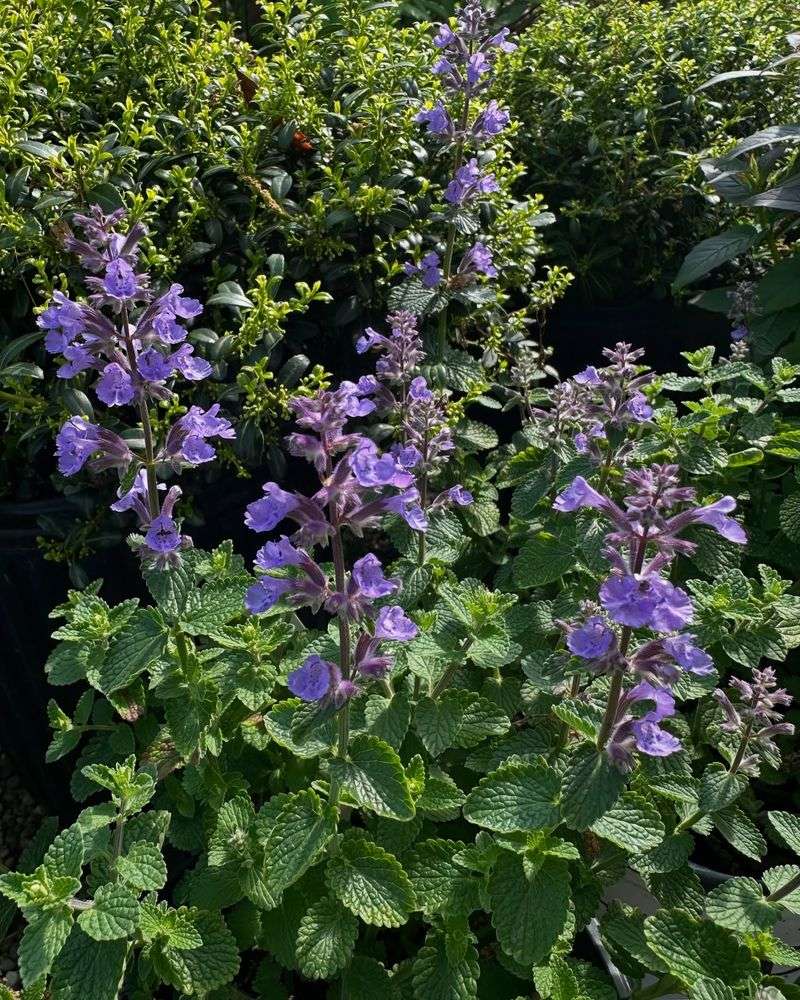Colorful gardens shouldn’t mean signing up for constant weeding and chasing down runaway plants. I used to think planting perennials meant watching them take over everything like they owned the place—but not all of them are that pushy.
There are plenty of well-behaved perennials that bloom beautifully without turning into garden bullies. Over the years, I’ve found some real gems that come back reliably each season and stay right where they’re planted.
If you’re craving color without the chaos, these 18 easygoing perennials will brighten up your space and let you actually enjoy your garden, not just manage it.
1. Coral Bells
Coral Bells create year-round interest with their stunning foliage in shades of purple, amber, lime green, or silver. The colorful leaves form neat mounds that stay put in the garden, making them perfect for borders or containers.
In summer, delicate flower stalks dance above the foliage, attracting hummingbirds while taking up minimal space. I’ve placed these between larger perennials as colorful fillers without ever worrying about them spreading where they shouldn’t.
These shade-tolerant beauties thrive in well-drained soil and rarely need dividing. Even after five years in my garden, my original plants maintain their compact shape without crowding neighboring plants.
2. Coneflower
Standing tall with distinctive daisy-like flowers and prominent centers, coneflowers bring cottage garden charm without spreading aggressively. Their deep roots grow straight down rather than outward, keeping these plants exactly where you want them.
Butterflies flock to the nectar-rich blooms throughout summer and into fall. After growing these for years, I’ve appreciated how they reseed just enough to give me a few welcome volunteers without becoming weedy or invasive.
Hardy in zones 3-9, coneflowers handle drought once established and don’t require dividing to maintain vigor. The seed heads provide winter interest and food for birds if left standing after the blooming season ends.
3. Blazing Star
Tall purple spikes create vertical drama in mid-summer gardens when many other perennials have finished their show. Unlike some meadow plants that run rampant, Blazing Star forms well-behaved clumps that gradually increase in size without aggressive spreading.
Pollinators absolutely adore these fuzzy purple flowers! The blooms open from top to bottom, providing nectar for weeks longer than many other garden flowers. Their drought tolerance makes them perfect for hot, sunny spots where other plants might struggle.
My Blazing Stars have remained in their designated spots for years, forming fuller clumps but never wandering. They pair beautifully with shorter companions like black-eyed Susans or Russian sage without competing for territory.
4. Japanese Forest Grass
Cascading like a miniature waterfall, Japanese Forest Grass brings movement and texture to shady spots without the aggressive nature of many other ornamental grasses. The arching leaves create a graceful mound that maintains its shape season after season.
Golden varieties like ‘Aureola’ light up dark corners of the garden with their bright striped foliage. Unlike running bamboos or other spreading grasses, this well-mannered plant expands slowly from its base, making it perfect for small gardens or containers.
Fall brings beautiful amber and russet tones to the leaves before winter dormancy. I’ve used this grass along pathway edges for years, and it’s never once jumped its boundaries or required aggressive cutbacks to keep it contained.
5. Salvia ‘May Night’
Deep purple spires emerge in late spring, creating dramatic contrast against silver-leaved plants or bright yellow companions. Unlike mint family relatives that run amok, ‘May Night’ Salvia forms tidy clumps that gradually widen but never invade neighboring plants’ territory.
A quick trim after the first flush of flowers encourages a second round of blooming later in summer. Deer and rabbits typically avoid this aromatic beauty, making it perfect for gardens plagued by these hungry visitors. The drought tolerance once established means less watering during summer heat.
Having grown this salvia for over a decade, I can vouch for its polite garden manners. Even when surrounding plants have needed dividing multiple times, my original ‘May Night’ plantings maintain their designated spaces without becoming crowded or spreading beyond bounds.
6. Dwarf Balloon Flower
Balloon-like buds pop open into starry blue flowers each summer, creating whimsical interest in the front of borders. Unlike many short-lived perennials, these sturdy plants return reliably for years while maintaining a compact 8-12 inch height.
Late to emerge in spring, balloon flowers benefit from markers to prevent accidental digging. Their tap roots mean they stay exactly where planted without creeping or spreading. When other perennials in my garden have required constant division, these little gems have remained perfectly behaved.
Cut flowers last well in arrangements, and the blue blooms complement nearly any color scheme. Growing these along my walkway has brought me joy watching visitors’ faces light up when they notice the distinctive balloon-shaped buds about to burst into stars.
7. False Indigo
Lupine-like blue flower spikes emerge in late spring atop shrub-like foliage that forms an impressive architectural presence. Despite its substantial size at maturity (3-4 feet), False Indigo grows slowly and stays in its appointed spot without wandering or requiring frequent division.
Black seed pods follow the flowers, adding interest well into fall and winter. The deep roots make this plant extremely drought-tolerant once established but also ensure it won’t spread underground like some aggressive perennials do. Native to North America, it attracts beneficial insects while deterring deer.
My False Indigo took three years to reach full size, but the wait was worthwhile. It’s now a cornerstone plant in my perennial border, providing structure and early season color without ever threatening to overtake its neighbors.
8. Coral Cranesbill
Low-growing mats of deeply cut foliage become covered with vibrant magenta-pink flowers from late spring through summer. Unlike its invasive cousin herb Robert, this well-mannered perennial geranium forms neat mounds without self-seeding aggressively or sending out unwanted runners.
Fall brings spectacular red foliage color before winter dormancy. Tough and adaptable, Coral Cranesbill thrives in everything from full sun to partial shade, making it perfect for tricky spots or as a front-of-border plant. The fine-textured leaves create an attractive groundcover effect even when not in bloom.
After growing various geranium species, this one stands out for its combination of abundant flowering and restrained growth habit. Mine has remained a tidy 12-inch clump for years, never once attempting to colonize beyond its allotted space.
9. Threadleaf Coreopsis
Delicate ferny foliage creates a soft, airy texture topped with cheerful yellow daisy-like flowers throughout summer. Unlike some coreopsis varieties that self-seed everywhere, threadleaf types form well-behaved clumps that expand gradually without overstepping boundaries.
Butterflies flock to the bright blooms while deer tend to leave this plant alone. A quick shearing after the first flush of flowers encourages another round of blooms to extend the show into fall. The fine-textured foliage provides a beautiful contrast to plants with bolder leaves.
I’ve tucked these into tight spaces between larger perennials, confident they won’t elbow out their neighbors. After six years in my garden borders, the original plants remain perfectly sized without needing division or causing any territorial disputes with nearby plants.
10. Bearded Iris
Regal blooms in nearly every color of the rainbow crown these spring garden classics. Despite their gradually expanding rhizomes, bearded irises remain relatively contained compared to many other perennials, and any unwanted spread is easily managed during routine division every 3-4 years.
Sword-like foliage provides vertical interest even when the plants aren’t blooming. Planting with the rhizomes slightly exposed at the soil surface ensures abundant flowering and helps prevent rot issues. Deer and rabbits typically avoid these fragrant beauties, making them problem-solvers for wildlife-prone gardens.
My grandmother’s purple iris has lived in my garden for over a decade, forming a respectful clump that’s easily kept in bounds with occasional division. The divisions make perfect gifts for friends who admire their magnificent blooms.
11. Foamy Bells
Maple-shaped leaves in stunning color combinations ranging from amber to purple to silver create year-round interest in shady spots. These hybrids between coral bells and foamflower offer the best traits of both parents: beautiful foliage, delicate flowers, and a completely non-invasive growth habit.
Tiny bell-shaped blooms appear on slender stems in spring, floating above the colorful leaf mounds. Perfect for woodland gardens or containers, Foamy Bells maintain compact dimensions without spreading aggressively or requiring frequent division. Their shallow roots make them easy to control if they ever outgrow their space.
After trying many shade perennials that quickly took over, these well-mannered plants have earned permanent spots in my garden. Even after years in the same location, they’ve remained exactly where planted without creeping into neighboring plants’ territory.
12. Pinks
Spicy clove-scented blooms sit atop neat mounds of blue-gray foliage, creating a classic cottage garden look without the spreading headaches. Unlike creeping groundcovers, these well-behaved perennials form tidy clumps that expand slowly, making them perfect for edging paths or tucking between stepping stones.
Heat and drought tolerance make Pinks ideal for hot, sunny spots where many other flowering perennials struggle. The evergreen foliage provides winter interest in milder climates, maintaining structure in the garden year-round. Most varieties stay under 12 inches tall, fitting perfectly into small spaces.
My original plants have remained in place for years, requiring almost no maintenance beyond an occasional light trimming. When friends complain about fighting aggressive perennials, I always recommend these reliable bloomers as the perfect low-maintenance alternative.
13. Astilbe
Feathery plumes in shades of pink, red, lavender, or white rise above ferny foliage, adding elegant vertical interest to shady gardens. Unlike many shade lovers that run rampant, astilbes form well-defined clumps that gradually increase in size without aggressive spreading.
Deer and rabbits typically avoid these plants, making them perfect solutions for problem areas. Different varieties bloom from early to late summer, allowing for extended seasonal interest when planted in combinations. The spent flower plumes provide winter interest if left standing after blooming.
Having grown astilbes in the challenging dry shade beneath mature trees, I’ve come to appreciate their reliability and good manners. They’ve never once attempted to take over the bed or required aggressive control measures, unlike the hostas and ferns planted nearby.
14. Peony
Lush, bowl-shaped blooms with intoxicating fragrance make peonies garden favorites that last for generations. Despite their impressive size and presence, these long-lived perennials grow slowly and stay exactly where planted, never sending out runners or self-seeding around the garden.
Glossy foliage remains attractive all season long after the spectacular spring flowers fade. Some varieties need staking to support heavy blooms, but dwarf types like ‘Scarlet O’Hara’ stand upright without assistance. The deep roots help peonies withstand drought once established.
My grandmother’s peonies have bloomed reliably in the same spot for over 50 years without becoming invasive or requiring division. This remarkable longevity without aggressive spread makes them perfect investments for gardeners seeking permanent, low-maintenance color.
15. Speedwell
Slender spikes of tiny blue, purple, pink or white flowers create vertical interest from early summer into fall. Unlike many spike-flowered perennials that self-seed everywhere, speedwell forms neat clumps that stay put in the garden without aggressive spreading or volunteer seedlings popping up in unwanted places.
Bees and butterflies flock to the nectar-rich blooms, making this an excellent pollinator plant. Deadheading spent flowers encourages additional blooming cycles throughout the growing season. Most varieties maintain a compact habit under 18 inches tall, fitting easily into mixed borders.
After trying several veronica varieties over the years, I’ve found ‘Royal Candles’ particularly well-behaved in my garden. It’s maintained its tidy form for five years without needing division or causing any territorial disputes with neighboring plants.
16. Sea Holly
Spiky, steel-blue flowers with dramatic bracts create architectural interest unlike any other perennial. Despite their bold presence, sea hollies stay exactly where planted thanks to deep taproots that anchor them in place without spreading underground.
Silvery-blue stems and thistle-like blooms add unique texture to garden borders and make excellent cut flowers, both fresh and dried. Extremely drought-tolerant once established, these plants thrive in poor soils where many other perennials struggle. Their unique color complements nearly any garden palette.
Unlike many eye-catching perennials that quickly become garden thugs, my sea hollies have remained perfectly behaved for years. They occasionally produce a few seedlings that are easily removed if unwanted, but never become invasive or difficult to control.
17. Hummingbird Mint
Aromatic licorice-scented foliage topped with colorful flower spikes attracts hummingbirds all summer long. Unlike aggressive mint relatives, well-behaved Agastache varieties like ‘Blue Fortune’ form clumps that gradually increase in size without sending out invasive runners or self-seeding excessively.
Heat and drought tolerance make these perfect companions for other sun-loving perennials in hot, dry locations. The tubular flowers in shades of blue, purple, orange, or pink provide nectar for pollinators from summer until frost. Most varieties maintain an upright habit without flopping or requiring staking.
Having experimented with many hummingbird plants that quickly became garden bullies, I particularly value how these remain well-mannered year after year. My original plants have stayed in their designated spots for five years without attempting to colonize beyond their boundaries.
18. Toad Lily
Exotic orchid-like spotted flowers appear in late summer and fall when many other perennials have finished blooming. Perfect for brightening shady corners, these unusual plants form gradually expanding clumps without the aggressive spreading habits of many other shade lovers.
Arching stems with alternating leaves create an elegant presence even before the distinctive flowers appear. Varieties with variegated foliage like ‘Miyazaki’ add additional interest throughout the growing season. Most maintain a manageable height between 24-30 inches, fitting well into woodland gardens.
My toad lilies have provided reliable fall color in a difficult dry shade location for years without becoming problematic. They expand slowly enough that division is needed only every 4-5 years, making them truly low-maintenance choices for challenging garden spots.
19. Catmint
Clouds of lavender-blue flowers hover above aromatic gray-green foliage from late spring through summer. Unlike true mints that run rampant through gardens, well-behaved varieties like ‘Walker’s Low’ form tidy mounds without aggressive spreading or excessive self-seeding.
Cats may occasionally roll in the fragrant foliage, but the plant bounces back quickly from such attention. A quick shearing after the first flush of flowers encourages another round of blooms to extend the show. Drought tolerance makes this an excellent choice for hot, sunny locations.
Having grown many different catmint varieties over the years, I’ve found them consistently well-mannered compared to other perennials. Their soft color and texture work beautifully to soften hard edges along pathways without ever becoming maintenance headaches that require constant containment.

